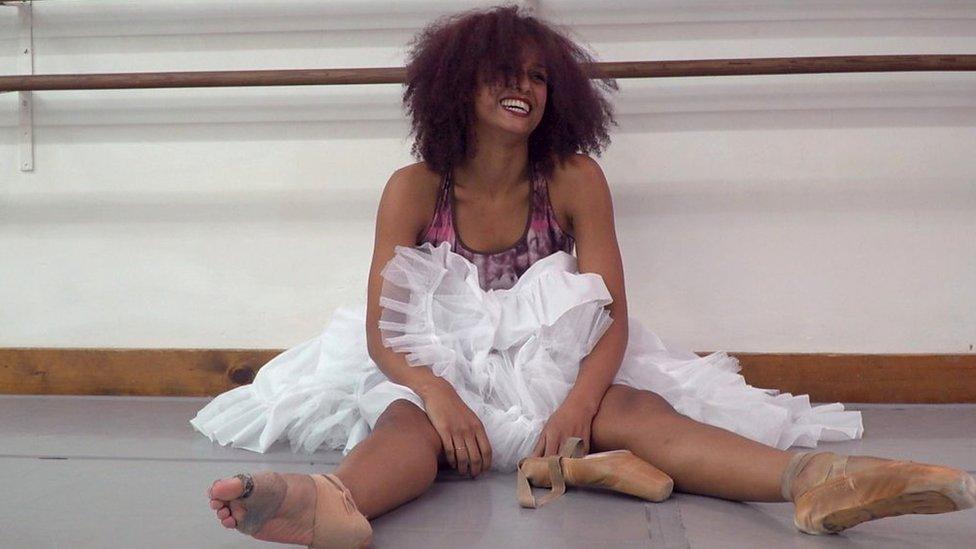Pioneering US ballet dancer Arthur Mitchell dies at 84
- Published

Mitchell was the first black ballet dancer to achieve international stardom
Arthur Mitchell, one of the first black ballet dancers, has died in New York City at the age of 84.
The pioneering African-American dancer rose from a childhood in Harlem to perform leading roles under renowned choreographer George Balanchine.
He was one of the most popular dancers with the New York City ballet in the 50s and 60s and was the first black dancer to gain international stardom.
Mitchell said his greatest achievement was bringing black people into ballet.
In 1969 he co-founded the Dance Theatre of Harlem, which was the first major classical ballet company in America to prioritise black dancers.
His earlier pairing with the white prima ballerina Diana Adams in 1957 caused a major stir in a country which was, at the time, riven by segregation.
In an interview earlier this year Mitchell, who lived in Manhattan, spoke of the early hostile reactions he had received from audiences before his talent ultimately won them over, leading to regular standing ovations.
"I danced myself into their hearts," he said.

Mitchell (R) introduces his dancers for a performance at the White House in 2006
However he also pointed out that there was still just a tiny number of African-American ballerinas, commenting: "There's still work to be done."
Mitchell's niece, Juli Mills-Ross, said his death had been caused by complications leading to heart failure.
The current director of the Dance Theatre of Harlem, Anna Glass, hailed Mitchell as a true visionary.
The theatre also paid tribute to the popular dancer in a tweet, saying that his legacy would live on.
Allow X content?
This article contains content provided by X. We ask for your permission before anything is loaded, as they may be using cookies and other technologies. You may want to read X’s cookie policy, external and privacy policy, external before accepting. To view this content choose ‘accept and continue’.

Nichelle Gainer, the author of the book Vintage Black Glamour, later tweeted footage reportedly showing Mitchell and Adams dancing to the choreographer Balanchine's Agon.
Allow X content?
This article contains content provided by X. We ask for your permission before anything is loaded, as they may be using cookies and other technologies. You may want to read X’s cookie policy, external and privacy policy, external before accepting. To view this content choose ‘accept and continue’.

- Published11 March 2016

- Published21 October 2017
